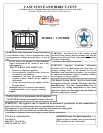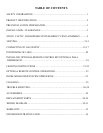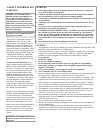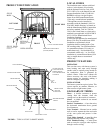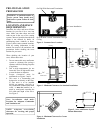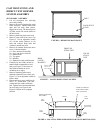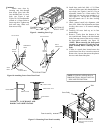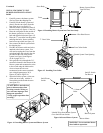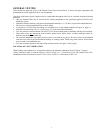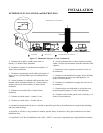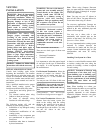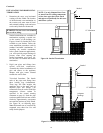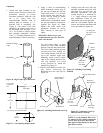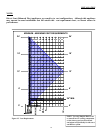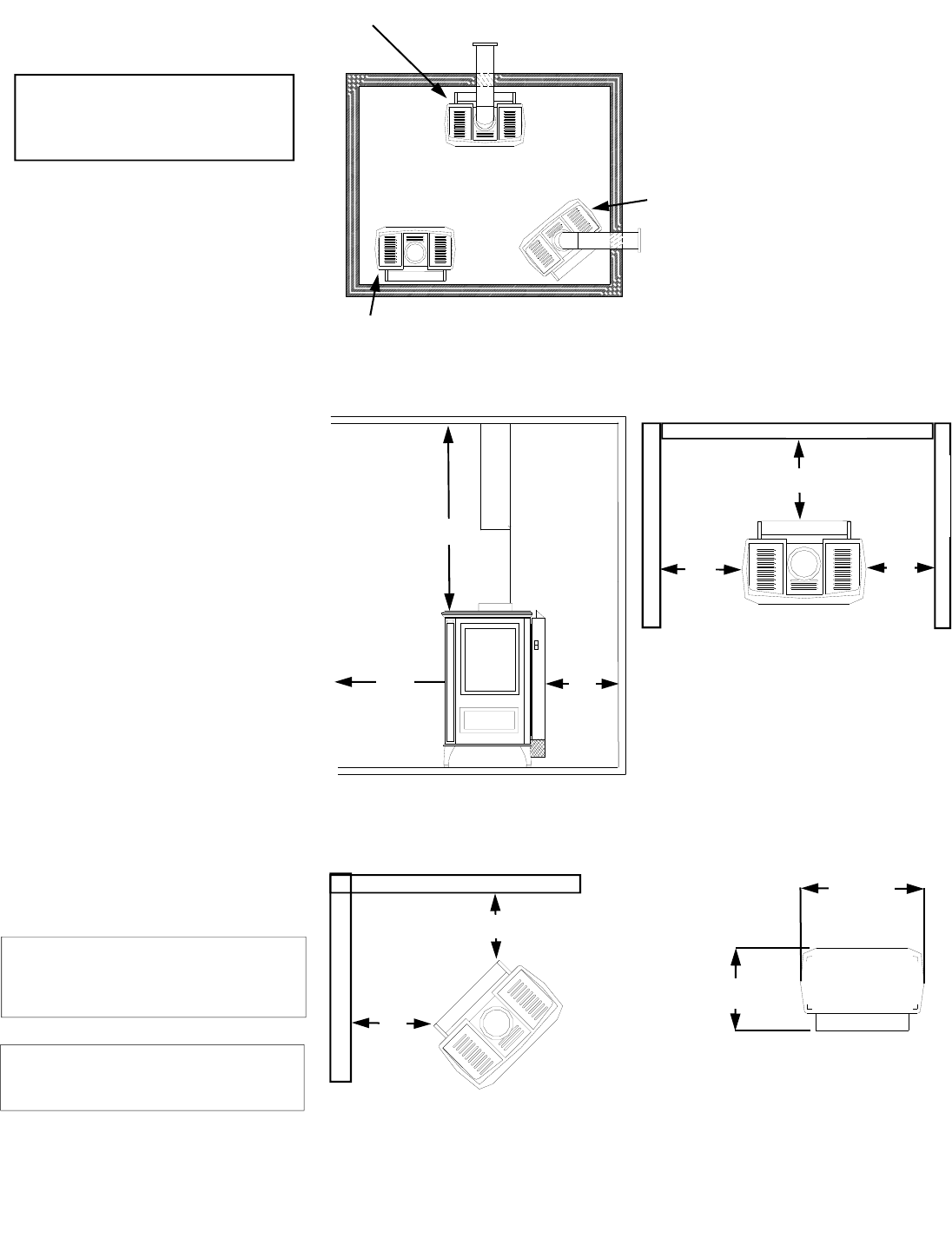
PRE-INSTALLATION
PREPARATION
LOCATION AND SPACE
REQUIREMENTS
Determine the safest and most efficient
location for your Buck Stove cast iron
stove. Make sure that rafters and wall
studs are not in the way of the venting
system. Choose a location where the heat
output is not affected by drafts, air
conditioning ducts, windows, or doors.
Figure 2 shows some common locations.
Read all venting information in this
manual. Be aware of all restrictions and
precautions before deciding the exact
location for your stove.
When deciding the location of your
stove, follow these rules:
1. Do not connect this stove and burner
system to a chimney flue serving a
separate solid-fuel burning fireplace
or appliance.
2. Due to high temperatures, do not
locate this stove in high traffic areas
or near furniture or draperies.
3. Proper clearances must be
maintained, see Figures 3 and 4.
4. This stove is a freestanding unit
designed to set directly on the floor.
If your stove is to be installed
directly on carpeting, vinyl tile, or
any combustible material other than
wood, it must be installed on a
metal or wood panel extending the
full width and depth of the stove.
See Figure 5.
Note: Installation shall make
Provision for Adequate Combustion
and Ventilation Air
NOTE: Adequate accessibility
clearances for servicing and proper
operation.
WARNING: A qualified installer or
service person must install stove
and burner system. Follow all local
codes.
On Wall With Horizontal Termination
On Wall With Vertical Termination Through
Ceiling
Corner Installation
Figure 2– Common Stove Locations
Ceiling
2"
36"
42"
From Front
From
back
2"
3"
Front
Figure 3– Minimum Clearances for Standard Installation
Floor
2"
2"
27 1/2"
19"
Figure 4– Minimum Clearance for Corner
Installation
Figure 5– Stove with Burner System
Bottom Dimensions
Left
Side
3"
Right
Side
Rear
Wall
Wall
Wall
3



